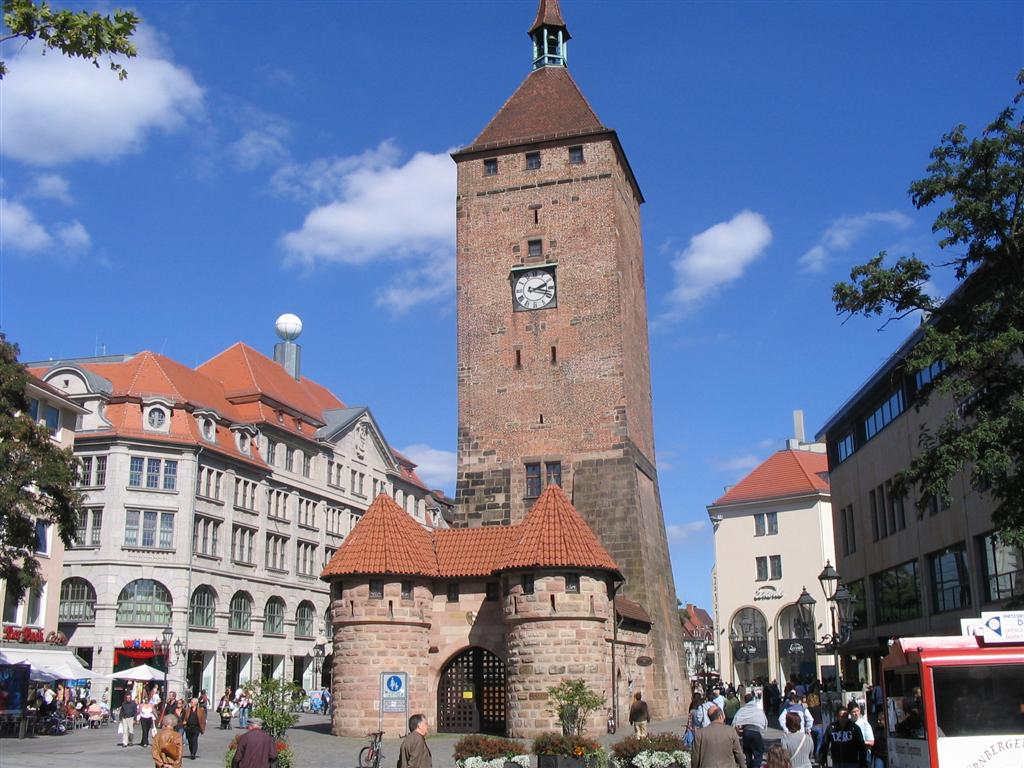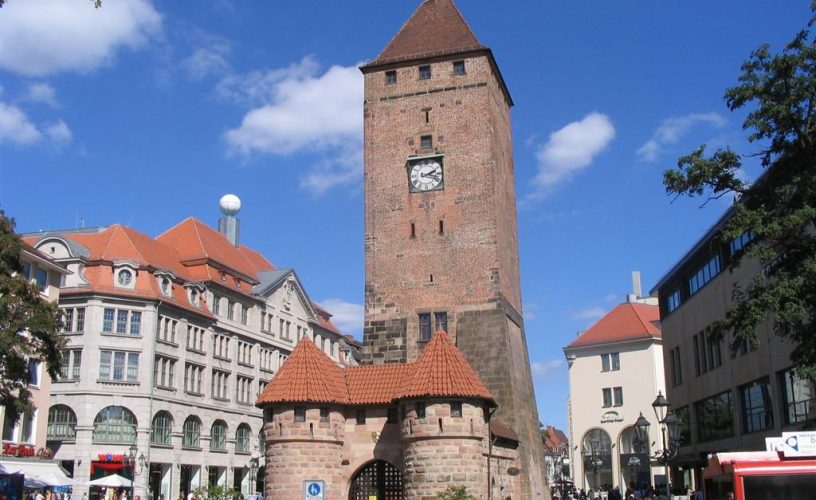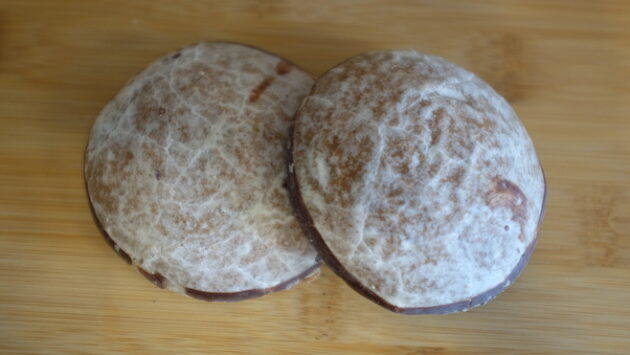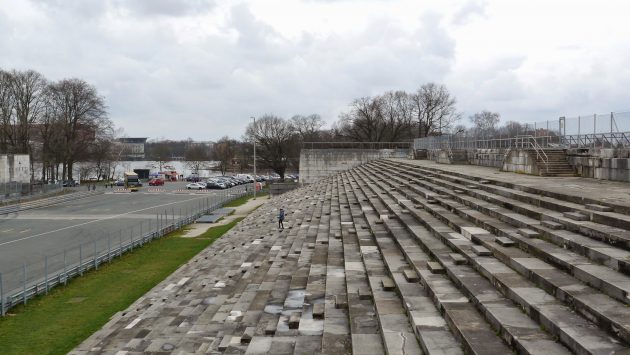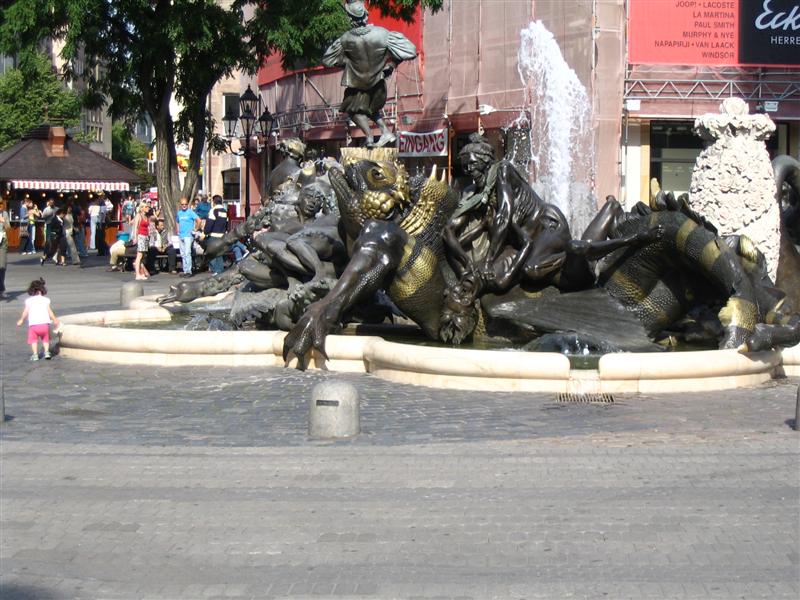Monuments
Nuremberg Monuments
Town Hall
Rathausplatz
Opening hours: Apr. – Oct. Tues. – Sun. 10 a.m. – 4.30 p.m., Nov. – Mar. Tues. – Fri, 10 a.m. – 4.30 p.m.
The town hall was built between 1616 and 1622 and was the last large secular building in Nuremberg. This is one of the most important buildings in Nuremberg. The building is reminiscent of a Renaissance Italian palace. Part of the city council chamber is a masterpiece of Gothic art and architecture.
For those who love mystery, in the cellar of the Town Hall are Medieval Dungeons of Nurenburg.
Albrecht Dürer was one of the plan makers for putting all into place, making it rare beautiful buildings. He was also present during the construction, so in this case, nothing was left to chance.
The town hall was originally planned as a four-wing construction but was not completed due to the threat of war and lack of money.
In The Second World War in 1945. the building was ruined to the ground. After that time, in 1956. up to 1962. the building was reconstructed. Because it was so badly ruined, all the reconstructed pictures and rare works of art now can be seen on the first floor of the Town Hall in Nurenburg.
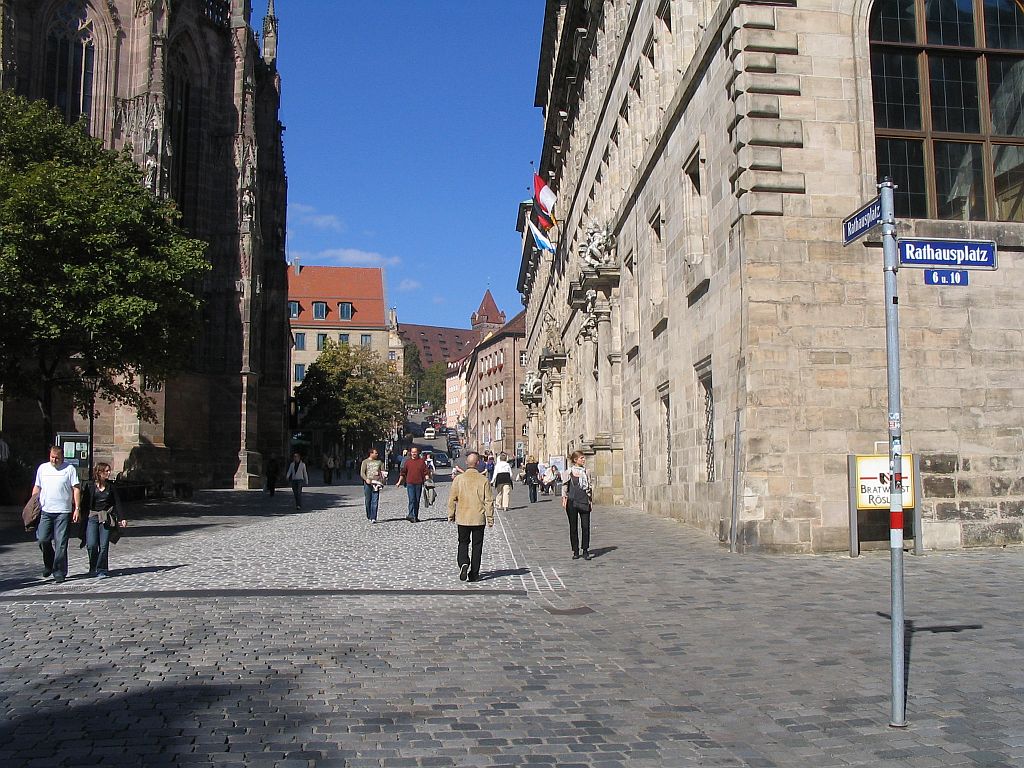
Congress Hall Nuremberg
The Congress Hall is one of the largest buildings constructed during the Nazi period and it documents the megalomania of the rulers of the time.
It was modelled on the Colosseum in Rome but was never completed. The top floor and the self-supporting glass roof are missing.
The party conferences of the NSDAP were to take place here. With a capacity of 60,000 people, it would have been the largest hall in the world. Even though it was never finished, this was one of the main buildings and one of the rarest that is left after the Third Reich. Today is still magnificent to see a treasure like this.
It was meant to replicate Roman Colosseum on a much larger scale, this building has everything to admire it. Build in the purpose of this building was to gather all from Nazi Party on Rally days.
It was build from 1935. up to 1937., this building employed 1.400 workers, that worked every single day until 1937. This huge landmark occupies about 11.000 square kilometres in the south-eastern part of Nurenburg, and the building itself was used only 6 times, holding Nazi Party Rallies from 1933. until 1938.
This place has 6 separate buildings, among which are KdF-Stadt (KdF-City), The Märzfeld ( literally: March Field ), Deutsches Stadion ( German Stadium ), The Zeppelinfeld ( Zeppelin Field ), The Congress Hall ( Kongresshalle ), The Luitpold Hall (Luitpoldhalle), Ehrenhalle ( or the Hall of Honour ), along with the The Great Road, which is long about 2 km, and 40 meters in wide. This road was made out of granite blocks black and grey, intended to be central axes inside buildings around. In any case, when visiting Nurenberg, be sure to visit this place, which is, not only part of German history but the history of the whole world.
Kaiserburg
Burg 13
Opening hours: Apr. – Sept. 9 a.m. – 12 p.m. & 12.45 – 5 p.m., Oct. – Mar. 9.30 a.m. – 12 p.m. & 12.45-4 p.m.
The castle – the major landmark of Nuremberg – is situated high above the city on sandstone rock. It was built in several stages during the reign of the Stauffer Kings and consists of an inner and an outer courtyard. The Sinwell Tower originates from the 12th century and served as a lookout tower. The “Fünfeck” Tower is the oldest structure in Nuremberg and is situated right next to the Imperial mews. The Imperial Castle can be as citizens love to call it a real symbol of Nurenburg. In the middle ages, those who didn’t have a lot of money, just their own Castles all through Europe, travelled from Castle to Castle during the year, keeping them afloat and never without means to live very comfortable lives.
The Castle itself had so many shopping places, that people from around the country and beyond, were gathering here to assemble and to sell and buy stuff or simply trade between one another.
Courts and Imperial Diets were held in this very Castle.
In late middle ages, Nurenburg was defined as a “most distinguished, best-located city of the realm”. Nurenberg becomes the best city in the whole Realm, besides Frankfurt, where Kings and Queens were first electeds, and then coronated.
In 1918. this place was filled with relics of preparation for the NSDAP, which held neo-Gothic scenes, sculptures and paintings. In 1938. the building was ready to make assembly of the most important people in the Reich. Esterer had a dream that he can merge neo-Gothic and ‘timeless German artisanship’ which is a skill in a particular craft.
In 1945. this Castle was also ruined not totally to the ground, keeping some of the works of neo-Gothic craftsmanship almost untouched.
Almost immediately after was, reconstruction was at hand again, and the whole restoration was made also by the Rudolf Esterer, who called it “creative conservation”.
Having been called the Imperial Castle is reason enough not to skip this destination when visiting Nurenberg even for a day.
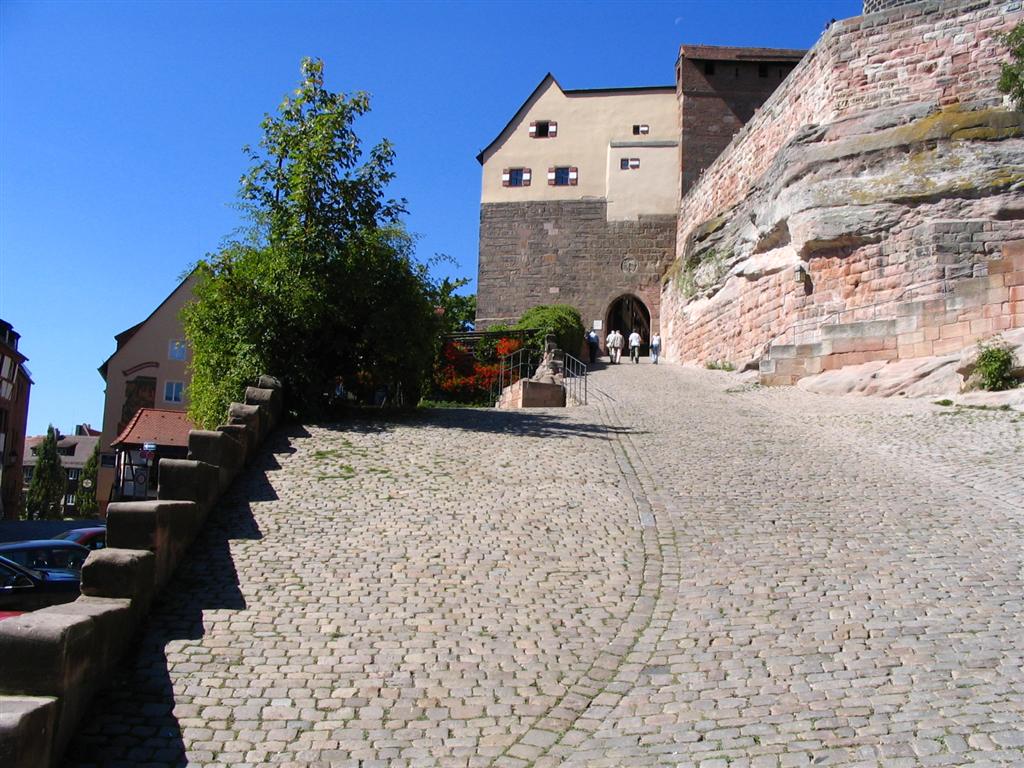
Palace of Justice
Fürther Str.
Guided tours: Sat. & Sun. at 1, 2, 3 and 4 p.m.
The building, constructed in 1916 in the style of the German Renaissance, was the location of a notorious special tribunal during the Nazi era. From 1945 – 1949 the so-called “Nuremberg Trials” of the criminals of the Nazi regime took place here. The main room is still used as a courtroom today.
The Palace of Justice was chosen for this trial because the building was almost slightly damaged, and could, with some finishing touches, be perfect for the trials, as there were enough space and a large jail complex where all defendant could be kept. Also, Nazi rallies were held here most of the time, and everyone wanted to see prisoners punished for the crimes committed.
This building is not just a Court, but everything that had to do with law and justice is settled right here in this building.
Just the thing that’s interesting about that place is that this Palate of Justice is that inside as a visitor place, and it’s called ”The Nuremberg Municipal Museums” where you can find various historical treasures like the museum of toys, or the museum for industrial culture, or the Memorium of Nurenberg Trials, house of games, German Games Archive, and very powerful Art Collections, etc…
It would be a big loss if you have time, and not visit this place, which you can visit by guided tours, but also, you can enjoy it by yourself, because there is a virtual guide that you can download and go around by yourself, having all the time you need to really take a good look of this place.
Heilig-Geist-Spital
Spitalgasse, am Hans-Sachs-Platz. The hospital was endowed by the Nuremberg merchant Konrad Groß in 1331. It served as lodging for the old and needy who, in return, had to pray for the soul of the benefactor several times a day. From 1424. to 1796. the Imperial Crown Jewels (crown, orb, sceptre) were kept here and these days it’s most famous for.
This hospital was from the very beginning had a purpose to help the sick, wounded, dying or poor people, and for that, it’s been know all through history. It especially takes care of the elder citizens of the town.
This hospital was built as a donation to the city by Konrad Gross, who was, at the time the richest citizen of Nurenburg. Having made the hospital which the only purpose was to cure and take good care of less fortunate people of the city, he wanted to by himself Seelgerät, or literally a Soul device which will help him in transition when he dies. The main scare was that in Heaven there is a scale, which, after you die, measures the thing you did during your life, and if it’s by those standards, someone good enough to enter into Heaven.
That was the main reason he made this hospital, and the second is that it’s on the water, partly covering river Pegnitz, also a good enough reason to spend time there.
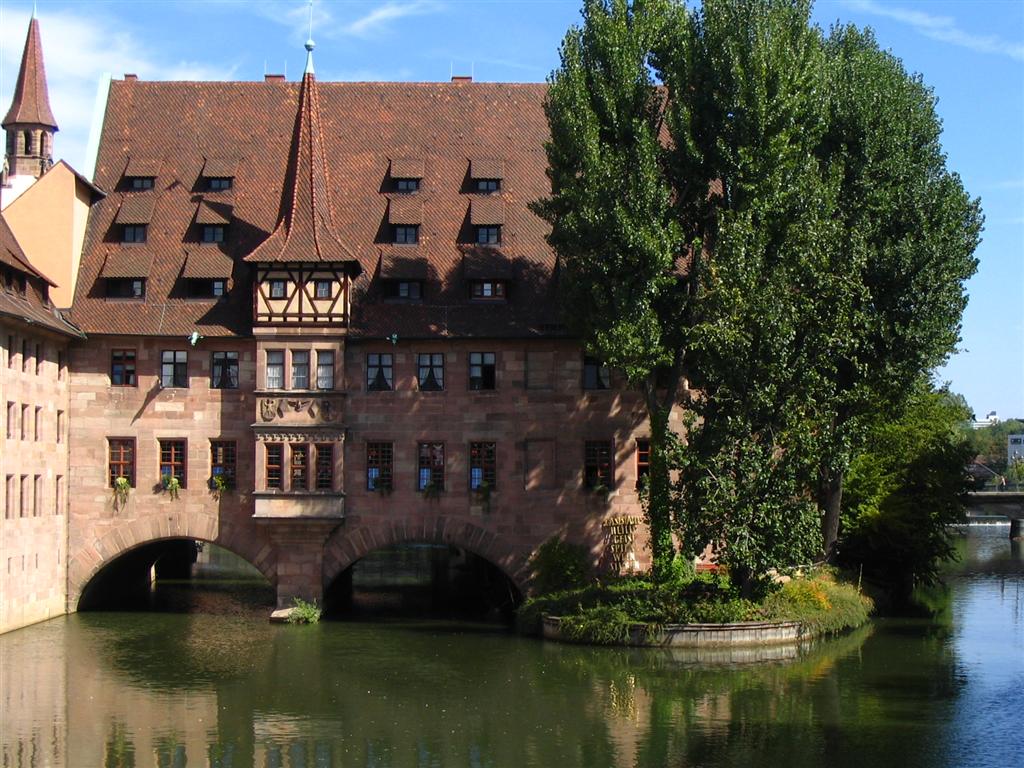
Nassauer House
Königstr.
The Nassauer House is situated facing the Lorenzkirche. It is the only preserved medieval tower house and served as manor house and residence of an Imperial counsellor, it originates from the 12th and 13th centuries and has been added to several times since then. The whole structure is made of Burgsandstein which is from a colour of Burgundy wine, that is why to this day, the building has red sides and almost the whole roof. It is made to look in Romanesque style, but this building still has the remains of Gothic style, still visible today. The name for this House and many like it was made in the 19th century.
The basement in which vault was kept was 2 stories below the surface, but around the 16th century the vault and the two whole stories were raised up, and now they are in line with the street.
In 1443. the Chrest Frieze was added on the sides and on the top of the House, and three Bay windows of the Nassau House through which you can see almost the whole city.
Not much is known about the original owner of this house, but many rich and famous people lived here up until 1709. when it became “Schlüsselfelder Family Foundation”.
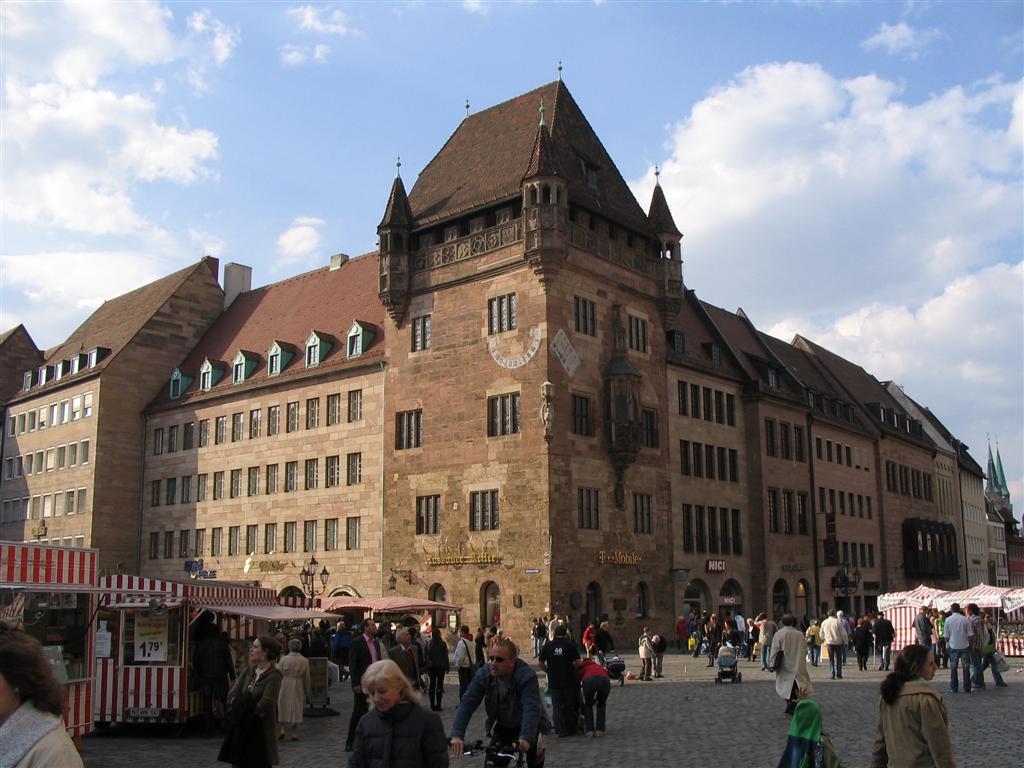
Tucher Palace
Hirschelgasse 9
Opening hours: Tues. 10 a.m. – 1 p.m., Thurs. 10 a.m. – 4 p.m., Sat. & Sun. 1 – 5 p.m.
The garden and summer residence of the Tucher family was built between 1533 and 1544 in the style of French Renaissance palaces.
The exhibition of art and furnishings belonging to the Tucher family shows the lifestyle of a Nuremberg patrician family.
This rare object is one of three left in Feucht to withstand the time.
The castle is being privately bought in the 1990s and in 2007 gardens were renovated into the Baroque garden.
The gardens here are so nice and stunning that in the case you have the time to visit, be sure to do it because it is worth it. No matter the time of the year, or, if there should be flowers in the winter, well, that is something that you will have to find by yourself. But will remain a great memory for the rest of your days.
Weinstadel
Am Henkersteg
The Weinstadel – one of the most beautiful half-timbered houses in Nuremberg – was built between 1446 and 1448 as a special infirmary for lepers.
From 1528 onwards lepers were banned from entering the city gates and the building was used as a storehouse for wine. Today the house is a student hall of residence.
For this medieval and most of all imperial city, this place is great to be in, to look from outside, and it is a cultural landmark of the town, especially for the north place of the city, where this is being considered the one of most impressionable look.
Even though during that time, around 1575., the building could have been used for elderly, or poor people, but it was insisted that the main part of the building stay for its purpose, and that is to keep the old wine cellar, which it remains just that until today. The part which was used as a hospital was moved 1627. to a better equipped “Schauhaus”.
As it becomes an architectural monument, it is also a station on Mile Long Walk through the city of Nurenburg.
Nuremberg Zeughaus
Am Hallplatz
For centuries the Zeughaus, built in 1588, was the weapons arsenal of the City of Nuremberg.
Only the splendid entrance gate remains today due to the destruction caused by the Second World War. Before The Second World War, that was a building complex, but after, only one part of the building was rebuilt. This building is now a police station, but besides it has a great deal of arsenal that would take you back in time, all the way where people wore a sword a shield. Almost all of the Arsenal is in the museum for tourist to see.
To be a weapon arsenal, the building was built by the Hans Dietmaier. This place replaced the armoury, which was there since 1383., and it was called “Pleidenhaus”. Way back in 1806. the building became state property, along with the arsenal.
After the war, they decided not to reconstruct the whole building, just to add up two towers on the east side. As mentioned, two storeys of the building are now the Nurnberg Police Station.
All the rest is the museum of arms through the centuries back, where you can see a lot of historic weapons.
Männerschuldturm
Heubrücke
The Men’s Debtors Tower was built in 1323 during the construction of the penultimate city wall. As soon as the building was finished, this was a place for people who didn’t have the means to pay their debts were left to languish for years behind these walls. This building wasn’t exclusively being used for those who didn’t pay their debt, but there were also for the” fool’s quarters” for the mentally ill.
About 1800. the prisoners were shouting so loud from the castle on to the passengers, that during that time a form of charity was gathered so that they can be released.
The second tower was meant to be a woman’s prison but was demolished soon after it was built.
This tower is one of two, built in that time and, the only one that survived bombs during the war.
Kettensteg
The Kettensteg spans the river Pegnitz on the western edge of the old town.
It was completed in 1824 and was the first hanging bridge in Germany, that’s why it’s called “The Chain Bridge”. This is a pedestrian bridge, where you can relax, and with ease go through it, and see a lot of both sides of the bridge. Even though it has a roof, it’s still a place from where you can look most of the main buildings in this town that has a lot to offer to citizens and tourists alike.
Once there was a defensive wall all during the middle ages, the river was the second defence from exiting the city of Nurenberg. Later was opened for construction and soon after The Chain Bridge was the most efficient and quick solution, which still stands today.
The bridge has 2 spans ( one on the open the other is under the roof ) wide 33 meters, and the total length of the bridge is 68 meters long. On both sides nearby by you can find restaurants and cafe’s along with other interesting shops that may catch your eyes. Either way, if visiting, you shouldn’t skip this unique bridge.
Zeltner Palace
Gleißhammerstr. 6
The former manor house had already been demolished twice when it was rebuilt in 1569. by the patrician Jakob Imhoff. The palace was severely damaged once again in the Second World War and was significantly altered during the renovation. Today the palace which is surrounded by an artificial pond contains a cultural meeting place.
Since the pictures aren’t doing any good when describing this place, during the tour of this city, every single visitor that comes here should be visiting this place more than once.
Seeing this one, surrounded by water everywhere you look must be a unique experience. Today, place so-called „Kulturläden“ is the epicentre of, not only cultural, but also a place of gathering all kind of people, no matter the years, or the mood, here you will find someone to talk to, to be close with, and to communicate with all different kind of people. Here you can meet people from the world of sport, and various kind of cultural gatherings, and that’s why this place is so popular among most of the people who live or just visiting this great city.
It also should be mentioned that in this place of culture, they make gatherings all over the city, and amongst other stuff, here you can find a variety of courses that and groups of people of similar age can have all kind of group activities, that can replace sitting home alone. Also, there is a space for preparing and introducing some old, and some new activities, exercises and performances. That is why this place has a special meaning for the city of Nürnberg.
Maxtor
Bei den Sieben Zeilen
The Max Gate, constructed in 1856, and a bridge formed the first connection between the old town and the northern city. Due to the increase in traffic, the city moat was filled in and both the bridge and the gate were torn down. The remaining tower shows where the Max Gate once stood. That was former City Gate, and it goes right through Nurenberg City Wall.
Today, on this same place there is no more gate, just renovated and now serves as almost the main street through which you can get to the North part of the town.
The Gate bears the name of one of the more famous king Maximilian The Second, who was the Bavarian king at that time. Not long after in 1877. the gate was demolished along with Froeschturm.
In the 1960s, on the eastern side of the gate was the police station, and the name ‘Maxtor’ is the synonym only for the hole in the city gate, which was made bigger as the volume of traffic became more and more demanding.
Besides hotels where you can have a quiet night of sleep, and those who have the capacity for larger groups of people, you can be sure that, if you stay around this place, you can have everything you can possibly need.
There is active daily life, with shopping malls and single stores, and more than active nightlife, restaurants, some would say that there is also a place to park your vehicle here, but that’s the info that changes daily. And, of course, the ATM machines, if you are left without money no matter the time of day or night.
Hans-Sachs-Monument
Hans-Sachs-Platz
Hans Sachs (5 November 1494. – 19 January 1576.) is Nuremberg’s most famous son after Albrecht Dürer. His poems and songs are still well-loved today. The monument, designed by Konrad Kraußer, was unveiled in 1874.
He was born in Nurenberg, and as a small child, he was going to church, but not to get the education, but to learn how to sing. Those were the beginnings of the great songwriter and helper of many well-known musicians. Having a tailor for a father, he had to learn something else to do in life, because, in those days there were a lot of musicians who played everywhere, so he had to find something to support himself if the times go wrong, as they usually do. So, by the age of 14, he was already in the school for shoemaking as a student.
At the age of 17, he was already ready to start his journey and make himself a great shoemaker. As years went by, he became pretty good at his work as a shoemaker and had his constant clients all over Germany. About 1519. he decided to stay a bit longer in the town by the name of Wels, to get a better education, and to rise a bit up in cultural science. As a good songwriter, King Maximilian the First takes him to be in his service, but being in one place was not what he wanted, and quit to continue with poetry.
All in all, he wrote over 6.000 pieces of work, but that number varies because many of unsigned poetry he wrote with someone else, not by himself. Among his more famous pieces are Meisterlieder, Carnival Plays, Tragedies but also Comedies, Dialogues of Prose and many many other songs and poet. Among his work, there is also a piece of Church music, which he wrote with a full heart.
Because he was so well known, In Nuremberg didn’t want him to be forgotten, so they made him a statue in the town, and that part of the town is named after him.
Albrecht-Dürer-House Nuremberg
Albrecht-Dürer-Str. 39
Opening hours: Daily 10 a.m. – 5 p.m., Thurs. until 8 p.m., closed Mon.
This 15th Century house was acquired by Albrecht Dürer in 1509. He was the most important and most famous painter in old Germany. Bourne in 1471., he lived here until his death in 1528. He also created his most important works here.
The house, which is a museum these days, is the only one in Europe that was by an artist and wasn’t ruined during the several wars this country and the whole of Europe, went through.
Today the house contains a museum that provides an insight into the life and work of the artist.
It’s a house made partly out of wood, but in every corner, you can feel the works of this great painter that was inspired by his home and made a great work of art there. Loved by many people, and the elders of the town, in 1828. this hose becomes the real museum.
This house has a very large collection of urban art, and the workshop that is inside the house is there to show the people today, techniques that are used in the time when the artist was alive.
Also, there is a must-see tour around the house, which is lead by the actress that represents wife of the late painter. In the same clothes and same manners, tourist can see what was like living in the late 15th and the beginning of 16th century.
Dürer Hare
Am Tiergärtnertorplatz
A bronze sculpture by Jürgen Goertz showing the world-famous Dürer Hare has stood here since 1984. The work is to be interpreted as a provocation of Dürer’s work that has been reproduced millions of times.
The painting that inspired this sculpture is ‘Young Hare’ that was painted in watercolours, and the same painting was so popular that almost every single artist of that time tried to replicate the same picture. The artist that originally painted the Young Hare or the ‘Feldhase’ Albrecht Dürer, who was so famous in his twenties by the woodwork, made a variety of paintings, sculptures, and many other works of art. This particular picture is kept in the Albertina museum in Vienna, and it’s part of the constant display.
This famous painting was made and remade in various artworks, and its shape is well-known throughout the world.
Jürgen Goertz made this sculpture in bronze, so huge and pretty oddly shaped because after that many remakes, painting the ‘ Young Hare’ has lost its meaning. He was Polish nationality, but German, his whole life. He made sculptures out of everything, mainly from metal, but his works can be found in plastic or stone, and wood, or many times, combining these techniques he made a sculpture known widely around the world.
After finishing Art Academy Karlsruhe Sculpture, his first exhibition was in 1974. in Badischer Kunstverein Karlsruhe. Among the other of his famous works are also Altar and Ambo equipment for the parish church of St. Gallus, “Musengaul”, Rastatter Rätsel or the Rastatter puzzle, and many many other.
As for the Young Hare, visitors should look it and then decide was it worth it, but its one of the most known bronze sculpture in Nuremberg. Either way, this piece of art will leave you breathless.
Nuremberg City Wall
The first city wall in Nuremberg was built in the 12th century. Over time it was extended twice due to the increase in population. The last city wall was built between the middle and the end of the 14th century. This wall had 128 towers, approximately half of which are still standing. The most recent city wall is still in a good condition today and bears witness to Nuremberg’s status as a fortified city, which was maintained until 1866.
In the time it was built, its purpose was to protect the city from entering those who wanted the city for themselves, and the Wall is widely expended several times because overpopulating this place.
Additional 4 kilometres of the wall today still stands at the same place it was once built. Some of the Gates that were on the wall, or the only way in or out of the city, this city still has three of these gates, which are renovated, like everything else in this beautiful town about 1956.
Nuremberg Castle, around which wall was built, in the middle ages was the example for the whole of Europe with one of the best-built defence systems around the town.
For example, during the great plague, all the gates were locked and citizens of the city were safe from any disease.
As one of the best systems to defend the city like this one is something you should see, but since it is covering that much of the town, there is no chance you will miss it.
One of the great things about those walls is that you can make magnificent pictures of the panoramic city, and that kind of elevated scene is not that easy to find, and this city is worth every picture you make here. If you choose this destination, you won’t be sorry. Enjoy!
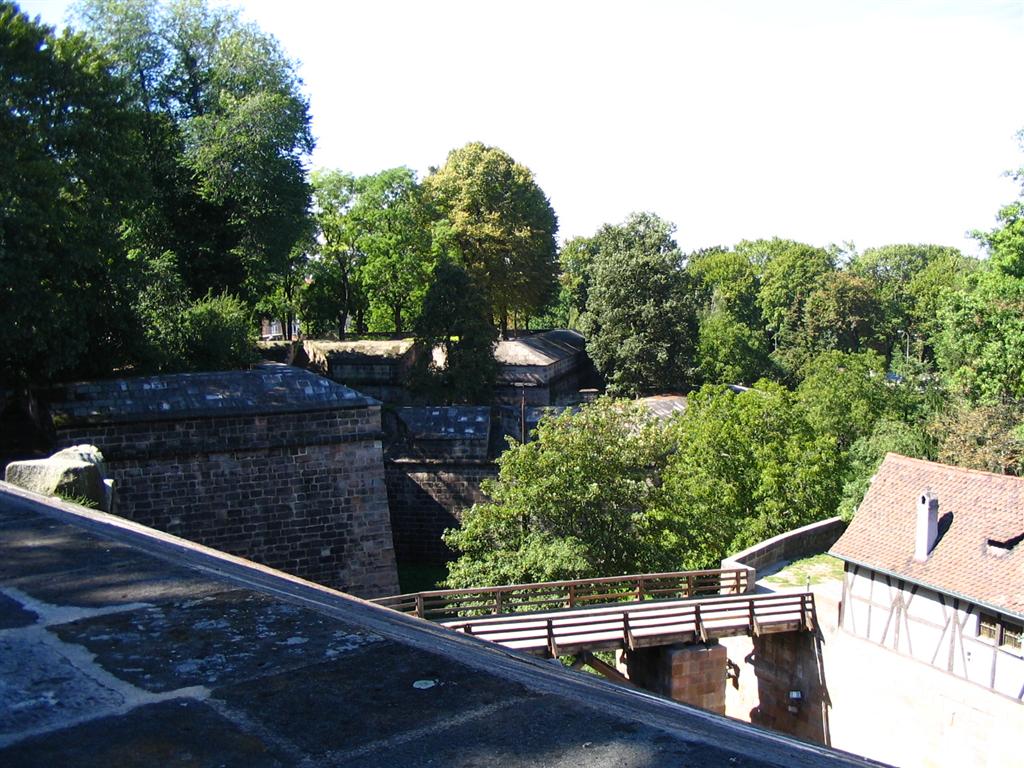
Frauentorturm
The Frauentor Tower – now known as the Königstor Tower – was built in 1388 during the last extension of the city wall. The Frauentor was the entrance gate of the trade route from Regensburg.
This Tower is most famous because it is part of the south-eastern wall and one of the Gates into the city.
Like many other towers, this one was originally square but was rebuilt as a round tower after the margrave war of 1556 in order to give it better protection against artillery fire.
This place is also known as a Woman’s Tower, because, since the middle ages, all kind of woman could find shelter here, no matter what work they were doing.
Maybe it’s best known as a Nuremberg’s Red Light District, where women often needed help in hand. This has been like this since 1381., but for some reason, since the 19th century, the name was changed into “wine shops” where you can buy love for the night.
The name ‘Red Light’ district stays the same to this day, and the tower now contains a huge number of wor art, which are mostly women, and also a museum worth visiting.
All around this tower are many, many small shops, where you can find the souvenirs that are rare even in Germany.
Those cute little shops, each cuter than the other is part of the ‘mile walk’ and also the place where women can enjoy more than man.
In case you get tired, you can find beautiful places to eat here, mostly domestic food.
Laufer Schlagturm
The Laufer Schlag Tower is one of the two remaining fortification towers of the penultimate city wall, the other being the “White Tower”. The sandstone tower with its thoroughfare was built just after 1250.
The tower is located on Laufer Platz and got a name from the clock that’s on the tower, which is just one in the series of great clock’s that are all over Nuremberg city. Almost every tower there has more or less complicate clock on the top of the tower.
Except for the “White Tower”, this tower is the only building that wasn’t ruined by the wars, and it still stands. An interesting thing about this place is that after the Tower was built, in 1508., 2 stories with wooden structure were added up to the tower, reinforcing the whole structure, and making this tower a great place to hide and to look out all around.
The thing that stands out here is that even if this was the only structure that survived both wars, city and its council decided to demolish it. People of Nuremberg got out on the streets and demonstrated until the order for demolishing was revoked. That’s how the citizens of this city cherish their heritage.
Tiergärtnertor
Am Tiergärtnertorplatz
This one is also a gate which is part of the long city wall.
This place is very popular as a tourist destination for visiting. This part of the city is also known as a place where you can find in the vicinity a house of Albrecht Durer along with other famous houses that are turned into museums.
The Tiergärtner Gate clearly shows the development of the city fortifications. The lower part was built in the second half of the 13th Century. Originally the traffic to Frankfurt passed directly through the gate. The gate could not cope with the increase in traffic volume and so a new gate was constructed in the course of the extension of the city wall in 1545.
At night, this place gets a different light. On summer characterized by pleasantly warm weather, this place lights up and somehow looks like all the young people of the world just gathered here for a big unnamed celebration, on the place where almost everything dates back to the middle ages. Wooden and half stone houses, in their characteristic surrounding, populated by so many young people, besides the restaurants and cafe’s are 3, 4 steps away, so you can enjoy however old or young you may be.
Weißer Turm
Am Ludwigsplatz
Like the Laufer Schlag Tower, this is one of the few remaining parts of the penultimate city fortifications.
The tower was built in the mid 13th century, severely damaged in 1945 and reconstructed in 1977. At first, it was used as a tool booth. Two towers that guard the tower, are one of the rare towers that weren’t demolished during The Second World War.
This place is a metro station, so you can go wherever you want from this part of the town.
The name itself says that this is a ‘White Tower’ because the white plaster was used during the construction of the tower. In the later years, the white plaster was removed to add defence towers and to rebuild them.
When its rebuilt in 1956., the last layer of white sandstone wasn’t added, so even if the name ‘White Gate’ stands, the tower is now red as the ordinary brick wall.
But there is a myth connected to the whole story and it says that if citizens want the tower to be white, it must be licked by the thousand Nuremberg virgins.
Keep in mind when visiting that this is one of the original Gothic architecture, and in this city, you will find many remains of it.
